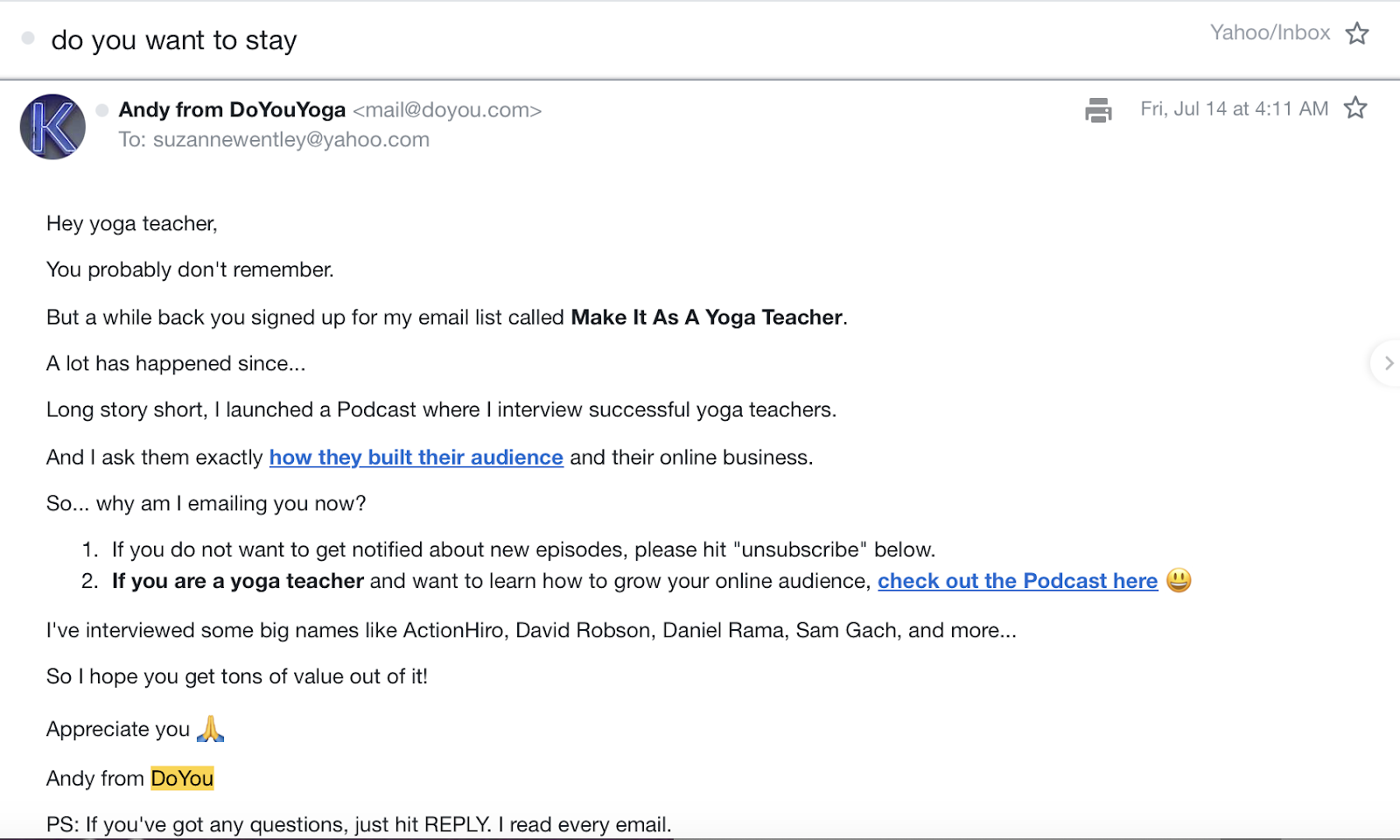Successful business owners — regardless of industry, niche, product, or service — all have something in common. They love numbers. Marketing experts do too!

Numbers, the quantitative bottom line on whatever is being measured, go well beyond any subjective analysis of success. Measurements and metrics objectively track how you’re doing, offering clear guidance about when things are working — and when things need to change.
Small and medium-sized business owners primarily think about their bank accounts when creating benchmarks for success, but it’s equally important to develop these points of comparative reference with digital marketing strategies. In particular, email marketing benchmarks allow marketing teams to show the work’s return on investment (ROI).
You’ve likely already read the email marketing statistics. Research shows companies earn an average of $36 for every $1 spent on email marketing. Retail businesses, including ecommerce and consumer goods, do even better, with an ROI of $45 for every $1 spent on an email marketing strategy.
The only way you’ll know if you’re above or below average is — you guessed it — by crunching the numbers. However, there are more ways to set benchmarks than simply looking at the bottom line of ROI. When you only focus on this big-picture metric, you miss the opportunities to refine and improve your email marketing strategy along the way.
So, whether you’re about to get started with email marketing or you’ve been doing it for years, block out some time to revisit your benchmarks.
Email marketing benchmarks 101
Before we go any further, here’s a clear definition: Email marketing benchmarks are data metrics used as parameters to measure strategic progress in short-term objectives of your long-term business goals.
Email marketing metrics let you identify where you’ve started and how close you are to meeting your goals.
Your first benchmark is a starting point to compare monthly or quarterly success. You won’t know the success of your email marketing goals if you don’t have anything to compare with your current situation. Consider it the “before” picture.
Why email marketing benchmarks are important
Many small and medium-sized business owners do not understand the importance of email marketing benchmarks simply because they haven’t created appropriate goals for their campaigns. Goals should be SMART, which stands for
- Specific
- Measurable
- Achievable
- Relevant
- Time-bound
SMART goals require some form of campaign monitor to track success, so you can determine whether you’ve reached the end game you’ve identified for your company. While some goals are visionary and lofty, that’s not what you want for digital marketing purposes. You want a specific practical goal that can help your business propel forward in some way.

Don’t forget to have a realistic timeline for the work; email marketing can sometimes take a quarter or two before you can see gains.
How email marketing benchmarks help gauge success
To illustrate how these benchmarks work, let me use the goals of a nonprofit organization I once worked for. When I first joined the after-school program as a communications director, they used Microsoft Office to email people involved in the organization. I signed the nonprofit up for Constant Contact and segmented the email list into groups like parents, board members, volunteers, donors, and staff.
My goal was to increase the engagement of each segment of my target audience by 50% within six months. One of my email marketing benchmarks was tracking the opens vs. clicks. I wanted to see how many people opened my email messages and how many engaged by clicking on the newsletter links.
By tracking this metric (and others), I could refine the message by seeing what each group cared most about. This made my emails more valuable and enhanced the relationships between the groups and my nonprofit. Ultimately, this meant more donations and better name recognition within the community.
Phases of benchmarking email marketing
When you’re ready to benchmark email success, understand that it cannot be done in a day. While many email analytics are available on the backend of platforms like Constant Contact, those static numbers are only a snapshot of work that will unfold over time. Start by creating perspective for your work.
Collect and process performance data
You’ll want to consider both internal and external benchmarks, and the first step for both is to create data charts with your company’s email marketing metrics. I like using line graphs to chart the changes over time. These can start by collecting your metric baselines in a weekly or monthly marketing report.
As you are processing the performance data, make sure you always compare apples to apples. For example, know the difference between hard bounce vs. soft bounce statistics. When you tease out data on the average bounce rate and other metrics — which we’ll get into in a minute — you may be surprised at how clear it will be to improve your work.
Compare data to industry standards and past performance
Once you’ve collected your internal data, gain perspective by researching industry averages. I found this the most eye-opening part of the process. Continuing with my example about my email marketing benchmarks for the nonprofit, I was initially disappointed to see that only a fifth of the people who received my emails were even opening them.
I thought a good goal was seeing a 100% email open rate. But then I started to research how often people who get an email open it. Shockingly, at the time, the average email open rate was between 15% and 25%. Turns out, my nonprofit — which had only recently taken email marketing seriously — was doing pretty well.
Once I gave myself a break and stopped expecting perfection, I found it was easier to compare my work against my previous email marketing benchmarks. That’s when I could see how my efforts, which focused on automation and personalization, were genuinely making a difference.
Key metrics for email marketing campaigns
Here’s a warning about key performance metrics: Don’t try to track them all. Many of my clients attempt this common mistake, which demands more time than it’s worth.
Instead, return to your SMART goals and consider which email metrics directly measure your desired results. You’ll have more time to create high-quality email content by only tracking a few critical measures.
Bounce rate: Understand soft and hard bounces
The answer to why emails bounce is complicated — and it does little to make the situation feel any better to the sender! Soft bounces are caused by temporary scenarios, like a full inbox or a disabled server. Some inboxes only allow attachments of certain sizes, and because of this, it’s almost always better to host the file on the cloud and include a link within the email message instead of attaching it directly.
Hard bounces are another matter. These are permanent problems, like an invalid email address. If you’re noticing these kinds of issues as you check your email performance and deliverability rates, it’s time to clean your email list.
Open rate: Measure email engagement
I tracked the open rate as one of the email marketing benchmarks at the after-school program because I knew it demonstrated the kind of engagement I needed to strengthen the club’s relationships with its supporters. However, it’s worth noting this is a tricky metric, as some devices let people read the message without actually opening it.
Many factors influence the open rate, including:
- Subject lines
- Sender information
- The time when email was sent
- How well the email list is segmented
For example, emails from “info@yourcompany” are less likely to be opened than emails from a person. That’s because people value personalized conversations more than robotic messages from faceless figures. Don’t be afraid to speak on behalf of the company in marketing emails.
Click-through rate: Encourage action in emails
The click-through rate (CTR) is another common benchmark to track. This is the rate at which email recipients click on a link in your email message. To determine this metric, you’ll need to do some math. Divide the number of clicks by the number of delivered emails.
For example, suppose you sent out 500 emails, and 10 bounced back. Of those 490 delivered emails, 10 people clicked on a link. Divide 10 by 490, and you get 0.02, or a 2% CTR. If this is the case, you may want to try adding buttons and other elements to help your call to action (CTA) stand out.
Click-to-open rate: Assess message effectiveness
Email marketers often combine both the open rate and the click-through rate when creating benchmarks for an email campaign. This is called the click-to-open ratio, which paints a more robust picture of how people engage with your email messages.
For example, suppose you have an impressive open rate, but no one clicks on your links. This suggests your email subject lines are fantastic, but perhaps your content isn’t resonating. You may want to try using a new template or send out a survey to see what your customers are interested in.
A/B testing is a great way to figure out how best to improve. This process involves changing one thing and seeing which version performs better. Sometimes, the click-to-open rate can be influenced by the time of day or the day of the week you send your email. Analyzing your email reports will help you determine the best time to send emails for your campaign.
Conversion rate: Track desired actions
Back to that bottom line: Conversion rate is another popular metric to track because it gets to the heart of what marketing is all about. Everything we do to strengthen relationships, build trust, and enhance brand awareness is intended to convert prospects into paying customers. The conversion rate measures that.
A similar metric is average order value (AOV). You can track who has become a customer and how much they are spending. Obviously, you want both of these email benchmarks to increase over time.
Tracking this customer journey — from opening the email to clicking on the link to adding a product to a shopping cart to completing the sale — can be automated with email marketing software like Constant Contact. However, you still must check this rate regularly to track it over time.
Unsubscribe rate: Manage opt-outs
When I began working in email marketing decades ago, I used to get demoralized about people who unsubscribed from my email list. But I encourage you to look at this benchmark differently. The more streamlined and focused your email list is — quality, not quantity — the better.

Still, it’s worth tracking and analyzing why people opt out of your email messages. If you get SPAM complaints, you may not be asking permission to send these emails. Ensure your email list is current by periodically checking in with your recipients.
Also, make sure your content is relevant. If they signed up thinking they were getting different information, they might be upset when you send something else. For example, if they signed up for an email newsletter, you should focus on informational and educational content. Shoot for about 20% of your message to be promotional to lower your unsubscribe rate.
List growth rate: Evaluate subscriber growth
Has the number of subscribers to your email list gone stagnant? This is another worthy benchmark to watch because it may also indicate stagnation in other parts of the business. It’s always a good time to implement a strategy for growing your list. A raffle, free piece of interesting content, or refer-a-friend campaign may get you the desired results.
Overall, these email marketing metrics are elements of your work’s overall ROI. It’s a good idea to think both of the big picture — the overall cost of marketing compared to the sales generated from it — and the efforts that can sometimes take longer to show their impact.
Use email marketing results
Of course, tracking email marketing benchmarks against the industry average isn’t enough. It’s important to take this data and help it paint a picture for improving your email marketing so you can get the best results.
To do this, schedule a time on at least a monthly basis to review your benchmarks and progress. Creativity takes time, so don’t try to squeeze in the work between payroll and manufacturing new products. If you have a marketing team, ask for a report and meet directly with them so you can work together to create more effective messages.
Improve deliverability for better engagement
First, look at ways to improve the actual delivery of emails. As I did in my work on email segmentation for nonprofits, you may be able to break your email list into smaller target audiences. This is an essential step in personalizing your campaigns, which will reduce the unsubscribe rate and possibly increase your conversion rate, too.
Send targeted messages to the right audience
Once your email list is cleaned up — a never-ending task, mind you — you can use your data to refine your messages for each audience. For example, if you have a clothing line, you can send one message to those who have purchased clothing for men in the past and a different one to those who have purchased clothing for women.
Craft compelling subject lines
Everyone knows you’re not supposed to judge a book by its cover, but that’s exactly what people do whenever they get an email. Good email subject lines will make or break your email campaign. Focusing just on this will go a long way to improving all your marketing metrics.
Make sure it grabs people’s attention without being too sales-y; you want to drive them to act in a concise and compelling way. If you can, personalize your message in the subject line and the preheader, too.
Achieve email marketing success and maximize engagement
Setting benchmarks is the best way to determine success in any email marketing campaign because every definition of success differs. While it’s good to compare your data to industry averages, achieving your business’s goals is all that matters in the end.
To get started, look at how you manage your email lists. You know what they say: Garbage in, garbage out. Delete emails that bounce and organize the rest into smaller groups that make sense for your company. Then, brainstorm messages that will matter to each group. And create a schedule for your email marketing campaign before you hit send the first time so that you can create regular messages your customers will want to read.




